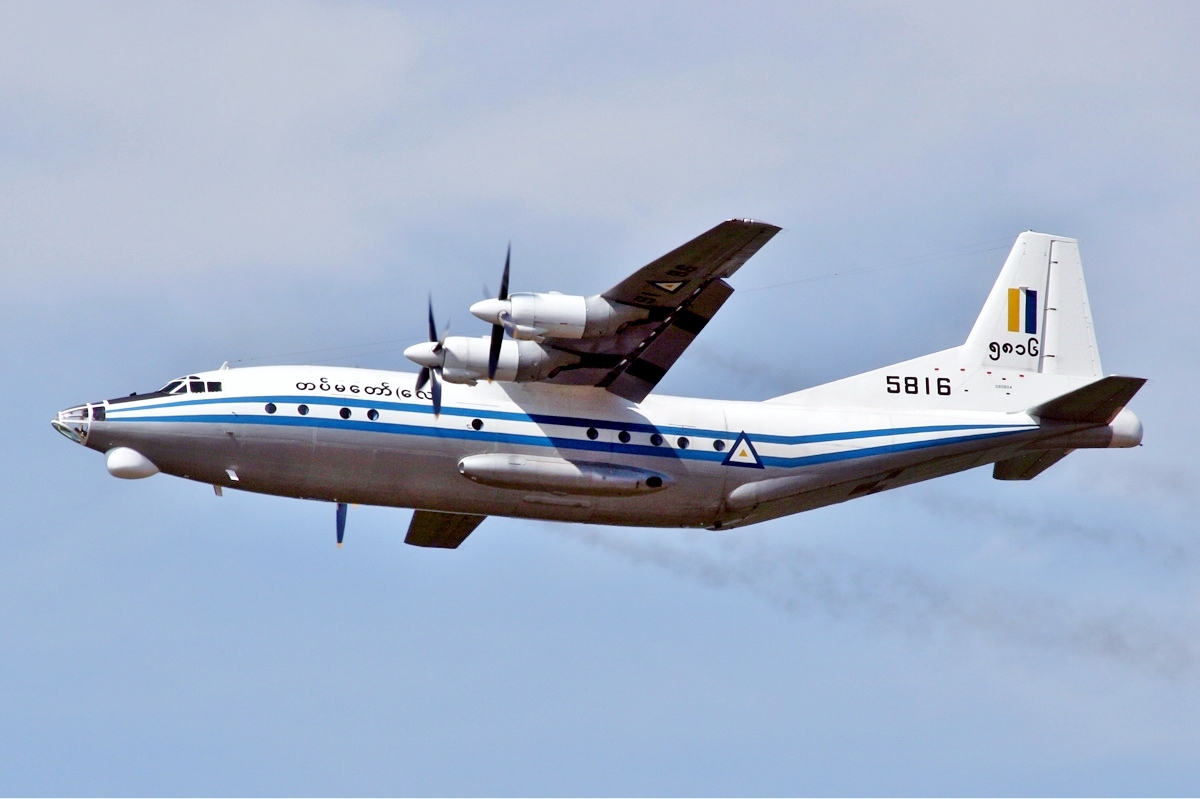The Chinese Navy (PLAN) has stationed additional aircraft and ships at Fiery Cross Reef in the Spratly island group to beef up its surveillance over the disputed South China Sea.
- At €7.8B, Why Indian Rafale Jets Are ‘Double The Cost’ Than Egyptian Rafales?
- Why Did Netizens ‘Mock’ Nigeria For Importing JF-17 Jets From Pakistan?
Besides Type-815G electronic surveillance ship, Chinese Navy Y-8Q maritime patrol aircraft and Chinese Airborne KJ-500 were spied out in the contested waters, the South China Morning Post reported.
The US released satellite images showing Chinese aircraft and a ship as the former has expanded its naval operations in the South China Sea.

Open-source intelligence Twitter handle, d-atis (@detresfa_), shared a post saying, “AIS data from the #SouthChinaSea analyzed with @CovertShores helps study #China’s survey activities, patterns, interests & involvement of its maritime militia in disputed waters”.
Amid Beijing’s ‘expansionist’ moves, the US conducted 72 reconnaissance flights over the disputed area in May, increasing from 65 flights in April, the South China Sea Strategic Situation Probing Initiative, a think tank, has revealed.
On May 18, Arleigh Burke-class guided-missile destroyer USS Curtis Wilbur transited the Taiwan Strait, drawing flak from China. Without delay, US anti-submarine patrol and reconnaissance aircraft and a spy plane flew over the disputed sea.
The US Naval Institute (USNI) quoted a statement from US 7the Fleet, the USS Curtis’ transit through the Taiwan Strait “demonstrates the US commitment to a free and open Indo-Pacific. The United States military will continue to fly, sail, and operate anywhere international law allows.”
USNI is a private, non-profit forum for debates on US national defense.
The USS transit is the fifth transit since Joe Biden won the Presidency. The US should work to improve its strategy to deal with China, an advisory body recommended to the Pentagon. The recommendations issued aim to strengthen cooperation with US allies, particularly those in the Indo-Pacific region.
Chinese military and naval operations have been the subject of much speculation. Collin Koh, a research fellow with the S. Rajaratnam School of International Studies at Nanyang Technological University in Singapore told SCMP, “I’ll surmise the ship is observing how these US and allied navies operate together”.
Koh called the Type-815G an ‘elusive’ ship, and said, “its main task was to collect critical intelligence on foreign military activities.”
Investigating #China's maritime militia & survey ship activity in the #SouthChinaSea with @CovertShores leads to an interesting discovery at Fiery Cross Reef, images via Maxar spot a naval surveillance ship (AGI) & aircraft on the contested island https://t.co/71A4r7TqVq
— Damien Symon (@detresfa_) June 10, 2021
Beijing’s Claims Over South China Sea
Beijing virtually claims almost all of the South China Sea, including the Paracel and Spratly island groups as its territory.
The South China Sea is important as it is rich in natural resources including oil, fish, and gas. It also serves as a strategic road that connects the Pacific Ocean and the Indian Ocean.
- WATCH: Russian Su-30 Fighter Forces F-35 Stealth Jets To Retreat In Their ‘First-Ever Encounter’
- Despite World’s Biggest Navy, Why China Will Struggle To Match Indian Submarines In The Indo-Pacific?
Territorial disputes have set China against its neighboring countries such as Malaysia, Vietnam, the Philippines, Brunei, and Taiwan. Moreover, Southeast Asian Nations (ASEAN) have attempted to internationalize the issue by involving the US, Japan, and other nations.
While the US is not directly a party in the South China Sea dispute, it has strengthened cooperation with ASEAN member-states and increased its military presence in the disputed waters.
The US has asserted its intent to preserve the freedom of navigation in international waters and upheld the right of the US to commerce freely.
Chinese actions in the SCS are a major threat to the principle of freedom of navigation and could dampen the US prospects of serving its interests overseas.
China has ruled out any third-party interference and maintained that US actions violate its sovereignty and add fuel to the rising tensions.
The Chinese move in early March to anchor 200 fishing vessels at Whitsun Reef in the South China Sea drew protests from the Philippines, a claimant in the disputed sea.
Post the meeting between Chinese Foreign Minister Wang Yi and his ASEAN counterparts this week, China has planned to upgrade its diplomatic ties to a comprehensive strategic partnership.
Kanika Sachdeva
READ MORE
- Watch: The Ultimate Dogfight Between US & Russian Fighter Jets Over A ‘Top-Secret’ Air Base In Nevada
- Why India’s Ladakh Region Is Crucial For China’s Rise As An Economic Super-Power?
- 30 Times Faster Than Speed Of Sound: Is China Really Winning The Hypersonic Race With Its JF-22 Wind Tunnel?